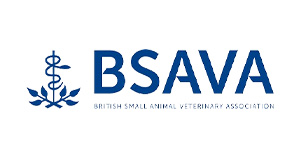A Case of Adult Pneumonia
Publish on: May 15, 2021
Cryptosporidium is the most frequently diagnosed cause of infectious scour in calves in Great Britain (Fig. 1), and we certainly see that mirrored in farms across the practice. The source of infection is adult cows or other infected calves.
Disease occurs from 4 days to three weeks of age.
Clinical signs can include:
Disease occurs from 4 days to three weeks of age.
Clinical signs can include:
- Loose to watery dung, bright yellow or green, strong odour, that can be blood-stained and/or contain mucous
- Dull / depressed posture – indifferent to other calves, head down and sometimes a swollen or tucked up abdomen
- Dull, sunken eyes
- Dry, dull, stary coat
- A low temperature <37.5oC if very dehydrated
- Slower, reduced or no appetite
Treatment must focus on oral rehydration therapy, pain relief and Halofuginone (Halagon).
Halagon can be used as both a treatment and a preventative medicine. It reduces disease severity and oocyst output – minimising further spread. On a group basis, preventative use of Halagon can prevent further scour due to Cryptosporidium after a diagnosis has been made. The drug is given daily for 7 days. It has a narrow safety margin and is toxic at twice the recommended dose, so it is really important to calibrate the dosing syringe of Halagon, to ensure calves receive the correct dose. Flyers are included with all Halagon orders and demonstrate how to prime the nozzle—this is very important else the correct dose may not be administered. Calves that have had scour for longer than 24 hours should not be treated with Halogon, and dehydrated calves should not be treated unless on oral fluids.The route of infection for Cryptosporidium is ingestion or inhalation of the organism from an environment that is heavily contaminated by faeces.
Hygiene and cleanliness are paramount and along with good colostrum are the key to prevention and control.
Halagon can be used as both a treatment and a preventative medicine. It reduces disease severity and oocyst output – minimising further spread. On a group basis, preventative use of Halagon can prevent further scour due to Cryptosporidium after a diagnosis has been made. The drug is given daily for 7 days. It has a narrow safety margin and is toxic at twice the recommended dose, so it is really important to calibrate the dosing syringe of Halagon, to ensure calves receive the correct dose. Flyers are included with all Halagon orders and demonstrate how to prime the nozzle—this is very important else the correct dose may not be administered. Calves that have had scour for longer than 24 hours should not be treated with Halogon, and dehydrated calves should not be treated unless on oral fluids.The route of infection for Cryptosporidium is ingestion or inhalation of the organism from an environment that is heavily contaminated by faeces.
Hygiene and cleanliness are paramount and along with good colostrum are the key to prevention and control.
Good hygiene must start from the moment the calf is born as many infections are picked up from the calving area. Hygiene and cleanliness must be maintained throughout the calf-rearing period, with specific care being taken to clean and disinfect feeding equipment between feeds and to thoroughly clean the environment on regular occasions and between batches of calves. Scour is 1.9 times as likely when calves are reared on wet bedding, and 0.6 times as likely when there is disinfection between groups.

Figure 1: Scour diagnoses in calves in Great Britain 2011-2018, where a diagnosis has been reached

Fig. 3: Severe consolidation (no air spaces) and marked interlobular oedema (“marbling”)











